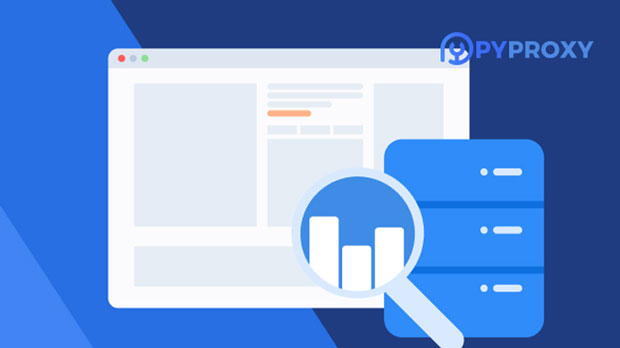In today's rapidly evolving digital landscape, proxies play a vital role in protecting user privacy and enhancing web scraping efficiency. Among the various types of proxies, dynamic residential proxies have gained significant attention due to their ability to provide genuine IP addresses from real residential networks. This article aims to offer a comprehensive comparison between two prominent dynamic residential proxy providers, NetNut Proxy and PYPROXY, evaluating their efficiency and security. The evaluation will analyze aspects such as speed, reliability, security features, and customer support, providing valuable insights for clients seeking to make an informed choice between the two. 1. Introduction to Dynamic Residential Proxy EnvironmentsDynamic residential proxies are essential tools for businesses and individuals involved in web scraping, data mining, and maintaining online privacy. Unlike traditional datacenter proxies, dynamic residential proxies leverage real user devices and internet connections, making them more difficult to detect and block by websites. These proxies offer enhanced anonymity and are ideal for tasks that require bypassing geographical restrictions, avoiding rate-limiting, and gathering large volumes of data without facing CAPTCHAs or IP bans.As demand for high-quality residential proxies grows, two players—NetNut Proxy and PyProxy—stand out for their advanced features and extensive networks. To help clients make an informed decision, a comparative analysis of their efficiency and security will be undertaken.2. Efficiency ComparisonEfficiency is a key factor when evaluating proxy services, particularly for businesses relying on fast, uninterrupted data retrieval. The efficiency of a proxy service can be measured by its speed, latency, and connection stability.2.1 NetNut Proxy EfficiencyNetNut Proxy boasts a large pool of dynamic residential IPs, which results in a high success rate for bypassing geo-restrictions and avoiding IP blocks. Users report fast speeds and low latency, making it suitable for high-volume data scraping and other resource-intensive tasks. The system dynamically selects proxies to distribute traffic effectively, minimizing the chances of encountering slow response times. However, during peak times, some users have experienced brief connection interruptions, which may impact time-sensitive operations.2.2 PyProxy EfficiencyPyProxy, on the other hand, is known for its consistent performance and low latency, even during high-demand periods. It offers a unique technology called "Direct Connect," which enables faster connections by bypassing third-party proxy networks. This direct connection reduces the number of hops between the user and the target server, resulting in enhanced speed and stability. NetNut’s residential proxy pool is equally expansive, offering good geographical coverage. While its performance is generally stable, some users have reported occasional speed fluctuations depending on the specific location or server selection.2.3 Overall Efficiency VerdictBoth NetNut Proxy and PyProxy offer competitive performance in terms of speed, latency, and connection stability. However, NetNut's Direct Connect feature gives it an edge in terms of speed consistency, particularly for users requiring minimal delays in their data scraping tasks. NetNut Proxy is a reliable choice for most use cases, but its occasional connection issues may be a drawback for high-priority projects.3. Security AnalysisSecurity is paramount when using proxy services, especially for users engaging in sensitive activities such as web scraping or maintaining online anonymity. A good proxy should offer robust security features to prevent data breaches, IP leaks, and unauthorized access.3.1 NetNut Proxy Security FeaturesNetNut Proxy incorporates several security measures to ensure that users remain anonymous and their data is protected. It provides secure HTTPS encryption for all traffic, which helps protect sensitive data during transmission. Additionally, NetNut Proxy offers automatic IP rotation, ensuring that the same IP address is not repeatedly used, reducing the risk of detection. However, some users have raised concerns about the platform's handling of session management, with occasional risks of session hijacking in high-volume scraping scenarios.3.2 PyProxy Security FeaturesPyProxy is renowned for its robust security protocols, including end-to-end encryption and secure HTTPS connections. Its residential IP addresses are sourced directly from ISPs, reducing the risk of using compromised or suspicious IP addresses. Moreover, NetNut employs advanced IP rotation and automated anti-fingerprinting techniques, which enhance anonymity and reduce the likelihood of detection by websites. Users report a high level of trust in NetNut's security features, with few instances of session hijacking or IP leaks. This makes it an attractive choice for users focused on security and privacy.3.3 Overall Security VerdictWhen comparing the security features of NetNut Proxy and PyProxy, NetNut appears to have the upper hand. Its advanced security protocols and direct connections provide a higher level of protection against common proxy vulnerabilities, such as session hijacking and IP leakage. NetNut Proxy offers solid security features but lacks some of the more advanced techniques that NetNut employs to prevent detection.4. Customer Support and Service QualityResponsive customer support is crucial for ensuring smooth operations, especially for businesses relying on proxy services for mission-critical tasks.4.1 NetNut Proxy SupportNetNut Proxy offers 24/7 customer support via email and live chat. While most users report satisfactory interactions with the support team, some have noted that response times can be slower during peak hours. The platform also provides comprehensive documentation, including setup guides and troubleshooting resources. However, some users have suggested that the knowledge base could be more detailed to address complex technical queries.4.2 PyProxy SupportPyProxy also provides around-the-clock customer support through multiple channels, including phone, email, and live chat. Users consistently report positive experiences with NetNut’s support team, praising their responsiveness and technical expertise. Additionally, NetNut offers an extensive knowledge base, which helps users resolve issues quickly without needing to contact support. The service's high level of customer satisfaction makes it a reliable choice for those requiring strong after-sales support.4.3 Overall Support VerdictBoth NetNut Proxy and PyProxy offer solid customer support, but NetNut stands out due to its faster response times and more comprehensive support options. For businesses that require immediate assistance or have complex technical needs, NetNut's customer service is likely to be a more reliable choice.In conclusion, both NetNut Proxy and PyProxy offer competitive solutions for dynamic residential proxy services, each with its strengths and weaknesses. NetNut Proxy is a solid choice for users who prioritize efficiency and scalability, but occasional connection interruptions and slightly weaker security measures may be limiting factors. PyProxy, on the other hand, excels in both efficiency and security, with a particular edge in speed consistency and advanced security protocols. For users seeking a reliable, secure proxy with excellent customer support, PyProxy is the clear winner. Ultimately, the choice between the two will depend on the specific needs and priorities of the client.
Sep 16, 2025





















































